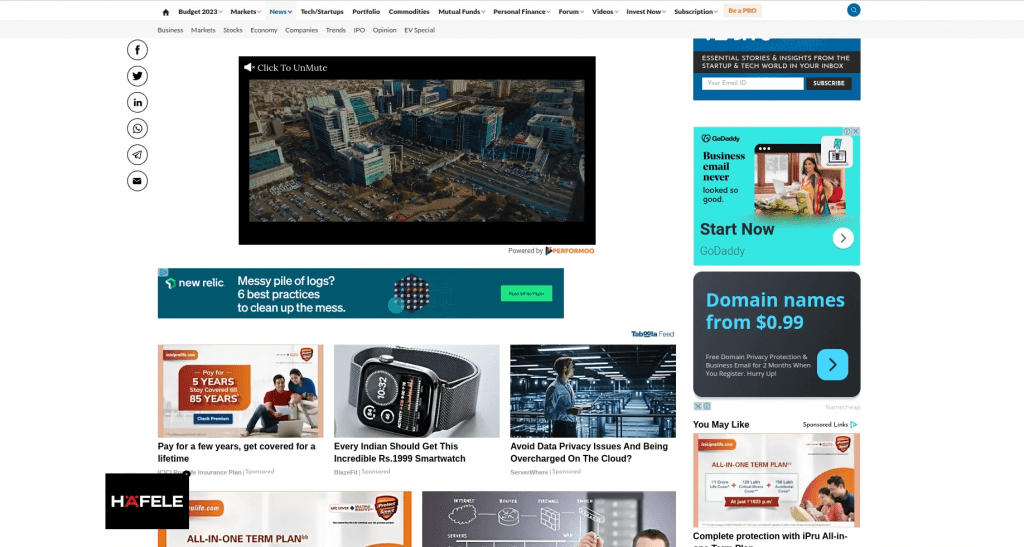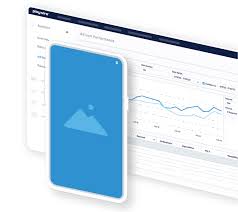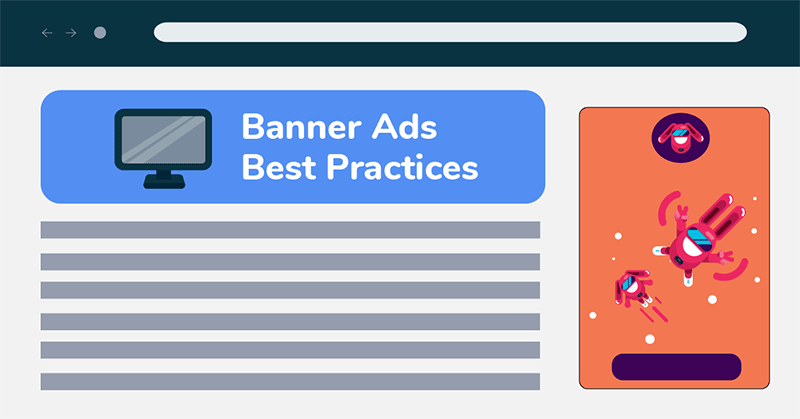It can be described as interactive ad content like animation, video, and games, not limited to text and images. Rich media on the other hand are more fluid than standard ads and include video, animation, voice, and features and content in the ad.
Why Rich Media Ads Stand Out?
Interactive ads have proven to be more effective than basic banner ads, that’s why these ads have become popular. Such ads drive greater user engagement, thus elevating view rates, CTRs, and conversions.
What is Rich Media Ads?
Rich Media Ads are interactive digital ads that engage users with multimedia elements like video, audio, and animations. These dynamic ads enhance user experience and boost engagement rates, driving higher conversions.
Rich Media Ads and Standard Banner Ads
| Standard Banner Ads | Rich Media Ads |
| It can be plain text in the form of HTML or only images that do not change in any way, such as JPG or PNG. | Support all text and image formats. |
| Cannot support or display video/audio materials. | Accept GIF, PNG WEBP animated images. |
| Lack of interactive elements. | Another tenet is the incorporation of video and audio material. |
| Restricted in the styles and gather. | Broad range of creative categories. |
| Sizes are restricted | Expandable to a larger size |
| Support one link that goes through to the rest. | Specific with the consistency provide in tracking and analytics. |
Text ads and Rich Media Ads
It share promotional information based on the text format in the blog or even the results of a search engine. Advertisers transition to this type of advertisement because it takes up little space in the communication chain. The size of the formats and the amount of information are limited by a character count. These appear space-efficient when presenting lots of information through file formats and other interactive features.
How It work
Rich Media Ads use various Technologies to Create Interactive ad Content
• Ad Servers: Systems store and serve ad creatives in real-time, gather user information, and present statistics on ad performance.
• HTML5: Technology supports rich media functionalities and is compatible with various devices.
• CSS3:Enhances advertising performance for faster display across multiple devices.
• JavaScript: It brings excitement and attractiveness to ads.
• Tracking Pixels: Data gather from the users to make it usable for analytics and performance.
Types of Rich Media Ads
Different Rich Media Ad Formats Serve Various Purposes
- Video Ads: Employ video ads that include pre-roll, mid-roll, post-roll, out-stream, and overlay ads.

- Interstitial Ads: Non-skippable ads that cover the entire screen during the transition. Usually, it is an interactive ad.

- Expandable Ads: These non-conventional ads offer more interaction and information for better engagement.

- Banner Ads: Ground banners with a variety of features to capture user attention.

- Pushdown Ads: Ads that overlap content upon page load, grabbing immediate attention.

- Lightbox Ads: These ads dim on-page elements, highlighting multimedia content to increase engagement.

- Slider Ads: Banners that slide in with images or videos, creating an interactive experience.

KPIs for the Rich Media Ads
Measuring the success of Rich Media Ad Campaigns Involves Tracking Several KPI’s
- Impressions: The number of times ad is seen. A good Reach media ad includes the number of times an ad is shown.
- Views/Plays: Total number of times an ad is placed before the consumers.
- Engagement Rate: Percentage of people who interact with the ad compared to how many see it.
- Completion Rate: The overall number of users who have engaged with the advertisements and come to a conclusion.
- Click-Through Rate (CTR): Ratio of the number of clicks to the number of impressions for a given set of links.
- Conversion Rate: The Number of users who take a specific action after going through the ad.
- Revenue: Calculate revenue by dividing gross subscription costs by gross subscriber additions, then subtracting the costs of subscriber marketing and dividing the result by the number of subscribers who converted.
Best Practices while Designing Rich Media Ads
- Prioritize User Experience: Interactive ads can sometimes disrupt user engagement, so keeping them minimal ensures smoother experiences.
- Optimize for Mobile: Since mobile internet usage in India is skyrocketing, ensuring ad compatibility with mobile devices is crucial for reaching more users.
- Include Clear CTAs: Rich media ads are interactive, multimedia ads that boost engagement with videos, animations, and audio. Capture attention and drive conversions—enhance your campaigns today!
- Use High-Quality Creatives: All audio and video production should be the best standard.
- Test and Optimize: Make changes to the ad campaigns on the go, meaning they should frequently have trial and tweaking.
Conclusion
Interactive Ads also known as Rich Media Ads stand out from the rest of the ads on the internet as they bring in multiple layers of content and other features making the ads more attractive and interactive. Develop these ads using HTML5, CSS3, and JavaScript technologies to achieve better tracking and analysis features for campaigns. Video, interstitial, expandable, lightbox, and HTML5 ads perform better compared to traditional display ads.
Make Your Campaigns Better with Performoo
Rich media ads are essential if the objective is to obtain high levels of user interaction and positive brand effects. We need to remind app, website, or digital property owners that Performoo can assist them in maximizing the revenue from the Interactive ads. Give us a call to begin the process.

